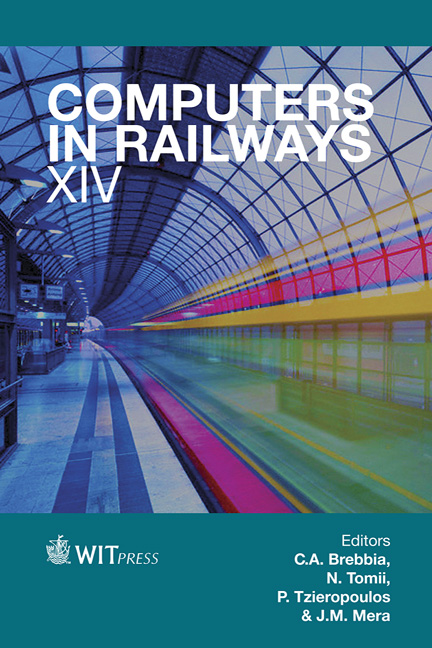The Optimization Of Train Timetable Stop-skipping Patterns In Urban Railway Operations
Price
Free (open access)
Transaction
Volume
135
Pages
9
Page Range
603 - 611
Published
2014
Size
570 kb
Paper DOI
10.2495/CR140501
Copyright
WIT Press
Author(s)
A. Jamili, S. F. Ghannadpour & M. Ghorshinezhad
Abstract
In this paper an operation mode, which is based on the determination of some patterns for train timetables, is analyzed. For this purpose, a new mathematical model is proposed to reach the optimized timetable patterns. In real-world applications, a small deviation from traffic analysis is acceptable, where passengers should stand more tightly inside the train. As a result, to reach a more practical and flexible solution, a fuzzy approach is utilized. At the end, a metro line is studied and the optimum patterns are presented and analyzed. It is found that in the stop-skipping approach, in comparison with the conventional all-stop approach, the number of stops reduces by 39%. By this new method, the number of trains that stop at stations differs according to the traffic that is usually measured by Passenger per Hour per Direction (PPHPD). Moreover, the commercial speed increases, and therefore, the number of required trains in operation reduces. However, this method results in a marked increase in the passengers’ average waiting time at non-crowded stations. Keywords: stop-skipping approach, train timetable patterns, fuzzy mathematical model.
Keywords
stop-skipping approach, train timetable patterns, fuzzy mathematical model.





